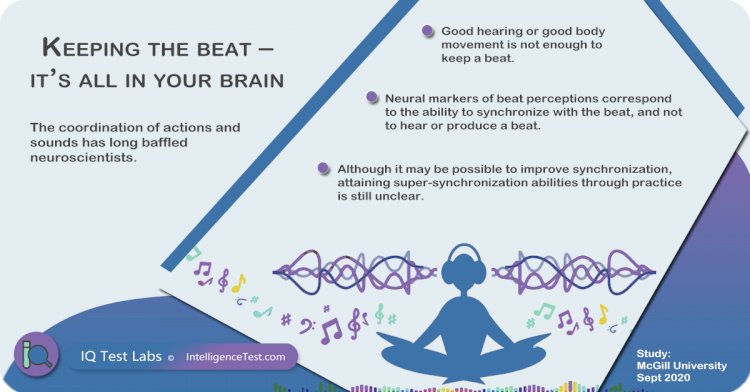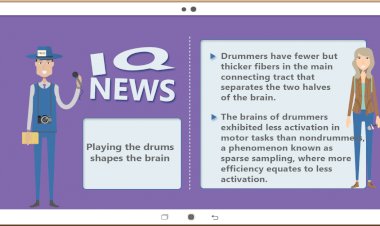Keeping the beat – it’s all in your brain
The coordination of actions and sounds has long baffled neuroscientists.

by McGill University
Main titles
- Good hearing or good body movement is not enough to keep a beat.
- Neural markers of beat perceptions correspond to the ability to synchronize with the beat, and not hear or produce a beat.
“The authors, as performing musicians, are familiar with musical situations in which one performer is not correctly aligned in time with fellow performers - so we were interested in exploring how musician’s brains respond to rhythms. It could be that some people are better musicians because they listen differently or it could be that they move their bodies differently. We found that the answer was a match between the pulsing or oscillations in the brain rhythms and the pulsing of the musical rhythm – it’s not just listening or movement. It’s a linking of the brain rhythm to the auditory rhythm.” - Caroline Palmer, McGill University.

- The experiment discovered neural markers of beat perceptions when musicians successfully matched their tapping with the musical rhythm.
“We were surprised that even highly trained musicians sometimes showed reduced ability to synchronize with complex rhythms, and that this was reflected in their EEGs.” - Co-first authors Brian Mathias and Anna Zamm.
- Data that emerged from the experiment was sensitive enough in order to distinguish between "good", "better", and "super-synchronizers" .
- Although it may be possible to improve synchronization, attaining super-synchronization abilities through practice is still unclear.
"Practice definitely improves your ability and improves the alignment of the brain rhythms with the musical rhythms. But whether everyone is going to be as good as a drummer is not clear.” - Caroline Palmer.
Source: mcgill.ca

















